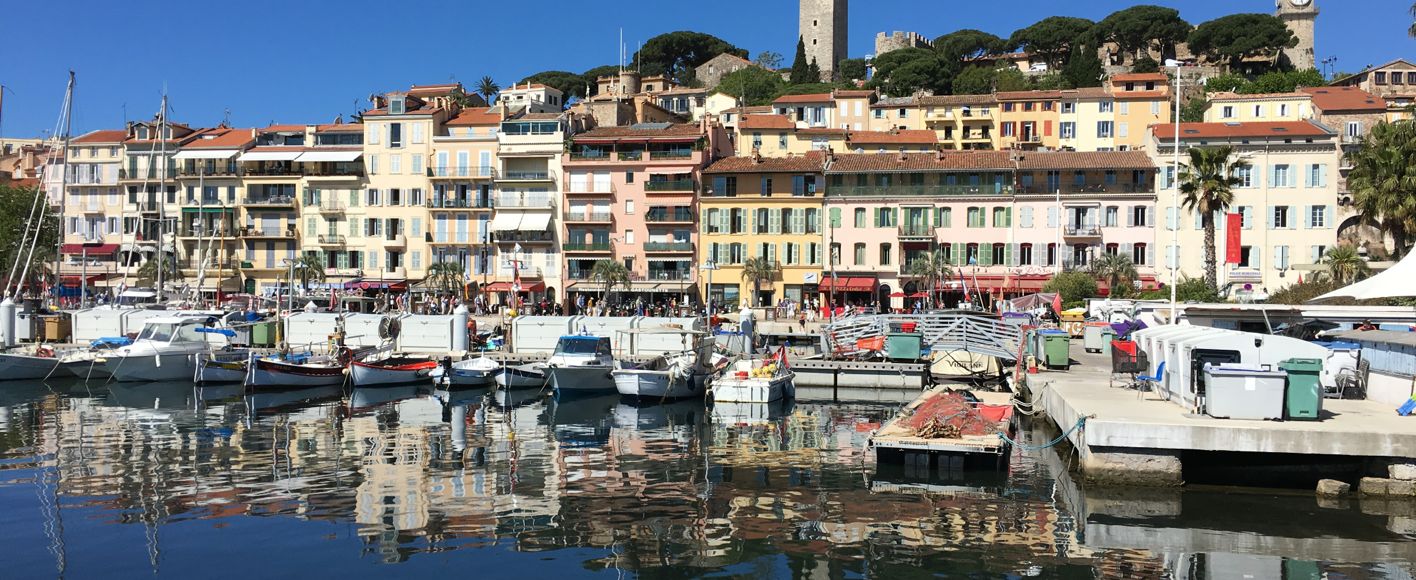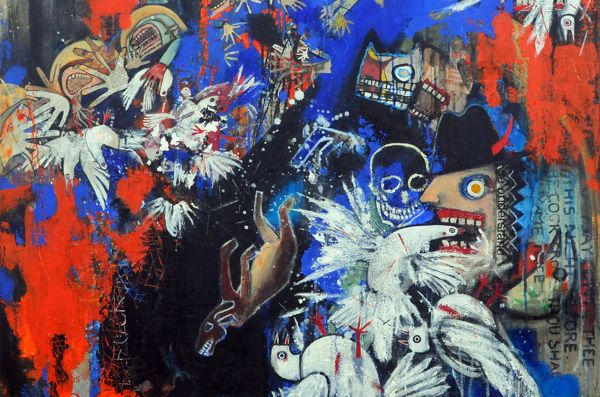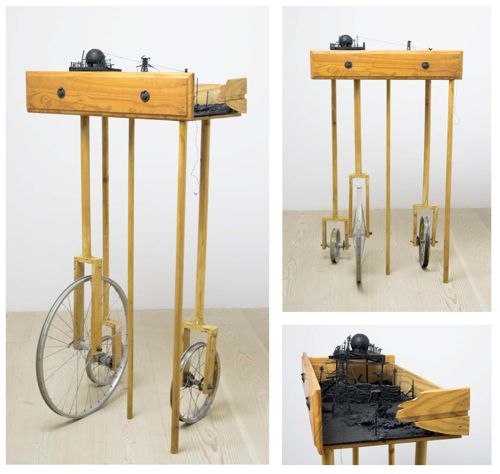 JANE FRERE: INTO THE VOID @ SUMMERHALL, EDINBURGH
JANE FRERE: INTO THE VOID @ SUMMERHALL, EDINBURGH(17 images shot by Malcolm Crowthers)
A corridor in an arts venue might be off-putting for some artists, but Scottish artist Jane Frere relishes site-specific spaces. She is best known for her moving and critically acclaimed installation, Return of the Soul, displayed in four countries in 2008 to mark the 60th anniversary of the Nakbah, the ethnic cleansing which forced many Palestinians to flee from their homeland when Israel was formed. Her latest exhibition Into the Void at Edinburgh’s talk-of-the-town new cultural venue Summerhall reveals, through highlights of work over the past six years, how a life changing experience in a war zone has affected the artist through drawing, painting, photography and printmaking. A journey in three stages, it moves from images of more than 3,000 suspended wax figures symbolising refugees in flight, via a period where the artist was living literally in the shadow of the wall, to the present theme, The Void, with images referencing a work in progress for an ambitious installation in a 10 metre tall lift shaft at Testbed1 in London at the invitation of international architect and artist William Alsop for his next A Few Friends exhibition in November. Jane has drawn on her site-specific theatre experience to recreate the overpowering and oppressive effect of the apartheid wall. Her Summerhall exhibition invites the viewer to pass through a claustrophobic tunnel - a vast photo-montage highlighting the sprawling oppressive wall; embedded within the montage is a video piece created by the artist as she panned through a five minute walk with the camera lens scrutinising the wall's surface capturing brightly coloured, textured graffiti to a disconcerting, aggressively gritty sound track of rushing traffic and haunting Arabic music. “The Israeli apartheid wall is an obscenity,” according to the artist. “It incarcerates, it crushes morale, it extinguishes hope. But although ugly and oppressive, the wall’s surface is often intriguing. It is full of words, peeling paper, colours and texture, and this finds its way into my drawing and painting. Conceptually, the layering of marks reminds me of a palimpsest, where text is worn away but can never be completely erased. Actually the map of Israel reminds me of a palimpsest, the imposition of a new map over an existing one, but history cannot be entirely eradicated. Compared to those who live there, my experience was brief. Every time I went in I had a ticket to get out, but you cannot be a witness, a tear collector and then leave, forget and move on. The emotional memory remains too strong. It’s not so much sadness or despair that I feel, it’s rage. Rage at the unfairness of it all. The Holocaust was a European atrocity and yet it is the Palestinians who are being punished. That’s where my despair lingers and that is imbued in the essence of everything that I do.”
Into The Void can be seen at Summerhall, Edinburgh, until the end of the Autumn. www.summerhall.co.uk The Void installation is at Will Alsop "Yet more friends," at Testbed1, Battersea, London on 28 November.www.testbed1.com
 SAAD QURESHI
SAAD QURESHI All sets of images courtesy of Gazelli Art House:
Set 1 -Other crescents other moons (Mixed Media including wood, cement and paint 440 cm diameter x 240 cm)
Set 2 -Alone in Earth Below (Mixed Media including wood, paint and leather 200 cm diameter)
Set 3 -Right of Return (Mixed Media including wood, beeswax and paint 37.5 x 79 x 144 cm)
Set 4 -Dead trees give no shelter (Mixed Media including wood, beeswax and paint 40 x 75 x 144 cm)
Since graduating from the Slade MFA in painting in 2010 Saad has exhibited widely, including the Saatchi Gallery, Aicon Gallery and Vyner St. He came to prominence in 2010 as a finalist in the BBC television program ‘School of Saatchi’ and his recent awards include the Royal British Society of Sculptors’ Bursary Award and Red Mansion Foundation Prize. Saad’s work explores failures of communication and notions of belonging in a multicultural society with paintings, sculpture and installation, which are both melancholic and beautiful.
In 2011, for Gazelli Art House Saad produced a monumental 9m long sculpture of a partially destroyed minaret The piece lay prone along the main room of the exhibition space and provided a dramatic and poignant starting point for visitors to the gallery. The minaret became a frequent frame of reference in Saad’s work, exploring the iconography inherent in the structure seen as the ‘stitch between heaven and earth’ in Islamic tradition.
Much of the work made by Saad Qureshi reflects his interest in the role of religion in the modern world. He states that by using stories from both the Bible and the Quran he is able to present ‘the failures of ideals and belief systems’ in modern life’. The conflict between spirituality and reality frequently features as symbolic representations in his works.
Other crescents other moons is an innovative on-going series consisting of landscapes based on individual memories. When visiting a new place, Qureshi posts an advertisement asking individuals to donate a written or verbal memory, which he then interprets into a landscape. When reproducing these landscapes, Qureshi skilfully weaves his own vision onto the memory without interfering with its content. As such, the origins and ownership of the memory is called into question, leading the viewer to explore the nature of perception and reality. As Qureshi states: “Many of us have left a certain place or even homeland behind, the vividness of which is etched in our memories. With other crescents other moons I will capture these memories, side by side, creating a continuum.”
Qureshi describes his ethnicity as British Asian and the presence of Islamic and Christian influences in his work are both an acknowledgement of multiculturalism and a reminder of the shared origins from which the Abrahamic religions derive. -Gazelli Art House
 Pavilion of Korea @ The 55th Venice Art Biennale (Giardini)
Pavilion of Korea @ The 55th Venice Art Biennale (Giardini)filmed by JEJ for FACADES
perhaps the most popular pavilion at this year's biennale
consistent long cues prevailed from the 3day press preview to the first open day for the public of the Biennale...
 Pavilion of Switzerland @ The 55th Venice Art Biennale (Giardini)
Pavilion of Switzerland @ The 55th Venice Art Biennale (Giardini)filmed by JEJ for FACADES
modern minimalism at its best...
 Pavilion of Venice @ The 55th Venice Art Biennale (Giardini)
Pavilion of Venice @ The 55th Venice Art Biennale (Giardini)filmed by JEJ for FACADES
Home grown works of art from the local silk factory to funky styling in video...













































